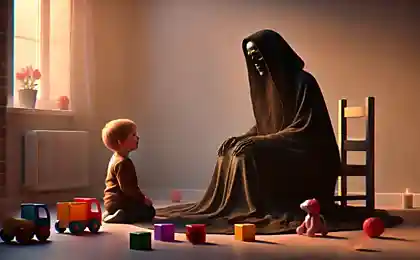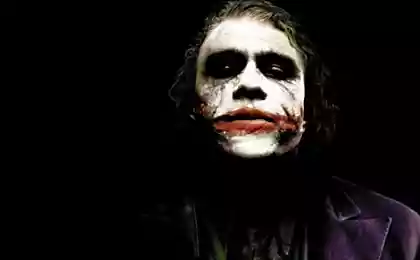511
Our death programmed?
In 1881, the German biologist August Weismann made in Freiburg with his famous lecture "About life". "I see death not as a primary necessity, but as something acquired as a secondary adaptation" — this catch phrase spread through many scientific publications and was actively discussed in leading Newspapers of the time. 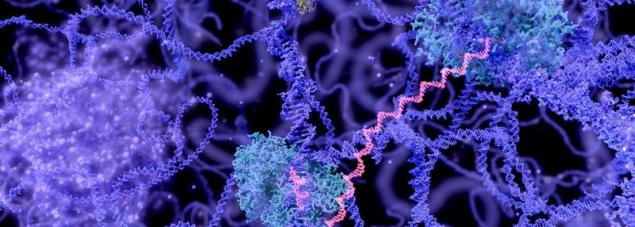
Academician of RAS, Director of Institute of physico-chemical biology named after A. N. Belozersky MSU, an expert on mechanisms of biological oxidation including the mitochondrial membranes. Working on a "cure for old age." Has the highest citation index among Russian biologists.
According to Weismann, wildlife invented in the evolution of a special program, gradually kills old organisms, thereby clearing the way for the young. The author was immediately accused of antiurbanism, and his hypothesis was ridiculed as a clumsy attempt to shift the elderly head of the Department, where he worked as Weisman. At the end of his life, he first stopped quoting his idea of death as adaptation, and then generally abandoned.
Nevertheless, the idea of aging and death from old age as the result of a kind of software embedded in the living beings, and still has its supporters. Moreover, in recent years, accumulated growing evidence in favor of justice to the concept of Weismann. It is primarily the discovery of apoptosis — cell death, programmed in her genome, and the existence of such a program single-celled, where to match the concept of "cell" and "organism."
22 may 2015 in the journal "Scientific reports" (Scientific Reports) there was an article j.And. Hayashi and his eleven employees of Japanese, University of Tsukuba, entitled "Epigenetic regulation of nuclear genes SHMT2, and GCAT leads to defects in respiration in human mitochondria during aging". The authors argue that mitochondria in the cells of people who are over 80, suffer multiple slow breathing, and this the most serious defect is not caused by accumulation of random mutations in DNA, and epigenetic regulation of a few genes. Significantly, the authors were able to some extent to correct this defect, that is how to rejuvenate old cells. (As wrote I. P. Pavlov, a real physiologist may consider himself the only one who returned to normal the disturbed physiological process.)
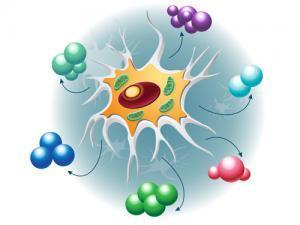
Fibroblasts — connective tissue cells of the body. The "simple" fabric from the point of view of the biologist. These cells are easy to cultivate outside the body, so they are often used in experiments. In this experiment, it rejuvenated them.
The stochastic hypothesis of aging proposes that we age and die due to the fact that the cells accumulate random damage.
First, Hayashi and his team measured the respiration of isolated cells of fibroblasts derived from human embryos or children from six months to 12 years of age and very elderly people (80 to 97 years). It turned out that the respiration of cells from a 97-year-old is six times lower than that of the embryo or young people, and this pathology develops mainly after the age of 80 (80-year-old breath was reduced against young less than half). Then from 27 958 genes of the human genome was selected 371 gene related to mitochondrial respiration and translation, and among them, six genes whose activity changed with age (according to literature data) in more than half.
Three of the six genes, as it turned out, did not depend on the age of the fibroblasts studied two groups of people, one was stimulated in the elderly, and the remaining two brakes. This inhibition could be caused by a random mutation in the DNA of the relevant genes, if the correct stochastic hypothesis of aging as a result of damage to the DNA molecules with age.
Another possibility was that aging is caused by the action of a special biological program that manages the activity of certain genes without the irreversible damage mutations. Control programs of this kind due to the work of specific proteins-enzymes present in the chromosomes (so-called epigenetic program).
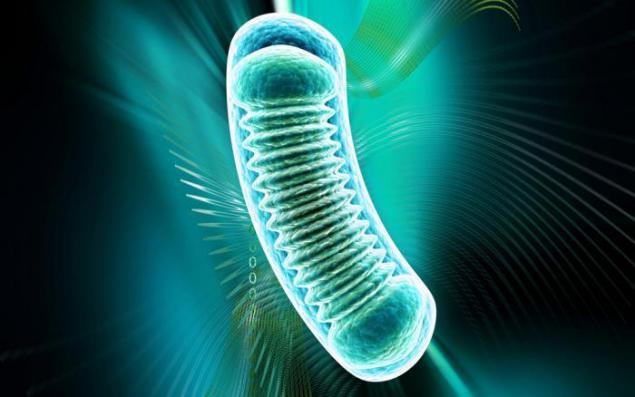
The mitochondria in the cells of people who are over 80, suffer from multiple slowing of respiration and this defect is not caused by accumulation of random mutations. To choose between these two options, Japanese authors used the following technique. Old fibroblasts was reprogrammable: they turned into stem cells, which later re-grow the fibroblasts. If the case in the mutation of DNA, this procedure is nothing could not help: how do stem cells and derived reprogrammable fibroblasts still would contain the mutant DNA and, therefore, would have suffered mutation caused by inhibition of respiration. If it was not in genetics but in epigenetics, it was a good chance to correct the defect in respiration in the transition "fibroblast — stem cell — new fibroblast". The fact that the transformation in fibroblast stem cell updates the cell line, which would be throwing off the burden of epigenetic regulation of the whole preceding life.

Mitochondria — energy station of the cell. This metaphor we remember from school. A small organelle in the form of a sphere or ellipse with two membranes. Oxidizes entering the cell of nutrients and oxygen due to this process (burning) generates the energy molecule ATP. It is a proven fact that mitochondria evolved from bacteria that were absorbed and forced to work in the ancestor of eukaryotes. The mitochondria remained modest the rest of the genome, although most of its genes billions of years ago moved into the nucleus of the host cell.
RNA, it Gematria RNA, or mRNA. The carrier of information from DNA, the main storage to the working machinery of the cell, ribosomes and proteins. The mRNA is copied one of the genes of the chromosome, and it turns out the instructions for the production of proteins; mRNA is then transported into the cytoplasm of the cell where ribosomes and make proteins according to the instructions. MRNA as well as genes (or even more), why is it that in a cage so many types of proteins.
So, the authors were able to almost completely remove the age old inhibition of respiration of fibroblasts through reprogramming of these cells. Then, they focused on two genes, which greatly slowed down with age. One of these genes met the expectations of Japanese scientists. It was the GCAT gene, encoding the enzyme required for the synthesis of the simplest amino acids — glycine (NH+3-CH2-COO-). The amount of RNA produced by this genome, greatly decreased with the age of the donor fibroblasts and reprogramming fully filmed this decline. Then was applied the mechanism of "knockdown" of gene specific RNA in fibroblasts from young, that inhibited the breathing. Artificial acceleration of the same gene in 97-year-old man partially recovered with a high respiratory rate (this rate has tripled). Finally, the "crown" experience: fibroblasts 97-year-old was cultured for 10 days in medium with glycine. Their breathing increased 2.5 times.
Apparently, the decrease in the rate of glycine synthesis has led to the deficit in a cage, and this, in turn, inhibited the synthesis of glycine porphyrins (needed for the formation of respiratory enzymes), and also one of the main cellular antioxidants — glutaminyl-cysteinyl-glycine (glutathione), purines, pyrimidines, creatine and protein fibrillar-type collagen, where glycine is 25% of all amino acids.
In General, the work of Hayashi and his colleagues can be summarized by the following scheme.
Program of aging → epigenetic inhibition of gene GCAT → a decrease in the synthesis of glycine in the cell → inhibition of respiration of mitochondria.
It remains unclear how the program of aging and in particular, what does the epigenetic control of gene GCAT. The attempt to clarify the program, conducted by the authors, can hardly be considered successful. There are many indications that the aging program involves active oxygen species generated in mitochondria (superoxide, hydrogen peroxide, hydroxyl radical). The authors tried to measure superoxide in fibroblasts of young and old people using the cation mitoses as a reagent for a superoxide. They found some increase in the response of this reagent with age (from 97-year-old he was on 67% more than in the embryo). However, mitoses merit from two interrelated parameters: superoxide and membrane potential of mitochondria.
For all its originality the work must be regarded as tentative. In addition, a large scatter of data Hayashi and his colleagues does not allow to draw any final conclusion about the level of superoxide. And here we must unfortunately say, that with all its originality the work must be regarded as tentative. The trouble is that young people were only three and one embryo, and the elderly is only four, and one in which the effect of aging was greatest (97-year-old patient), was also only in the singular, and the other three were aged 80 to 86 years. No major gerontological journal would accept an article where the experimental cohorts so blatantly small. The situation is no better with replications: they were always all three. Key experience on the effects added to the fibroblasts glycine is generally made only at the 97-year-old, is compared with a single embryo. It is no coincidence that the most important observation is placed in the Annex and not in the main text of the article.
It is hoped that the trail will come from other researchers, who will have to repeat again this potentially interesting work. published
P. S. And remember, only by changing their consumption — together we change the world! ©
Join us in Facebook and in Vkontakte, and we're Classmates
Source: kot.sh/statya/233/nasha-smert-zaprogrammirovana

Academician of RAS, Director of Institute of physico-chemical biology named after A. N. Belozersky MSU, an expert on mechanisms of biological oxidation including the mitochondrial membranes. Working on a "cure for old age." Has the highest citation index among Russian biologists.
According to Weismann, wildlife invented in the evolution of a special program, gradually kills old organisms, thereby clearing the way for the young. The author was immediately accused of antiurbanism, and his hypothesis was ridiculed as a clumsy attempt to shift the elderly head of the Department, where he worked as Weisman. At the end of his life, he first stopped quoting his idea of death as adaptation, and then generally abandoned.
Nevertheless, the idea of aging and death from old age as the result of a kind of software embedded in the living beings, and still has its supporters. Moreover, in recent years, accumulated growing evidence in favor of justice to the concept of Weismann. It is primarily the discovery of apoptosis — cell death, programmed in her genome, and the existence of such a program single-celled, where to match the concept of "cell" and "organism."
22 may 2015 in the journal "Scientific reports" (Scientific Reports) there was an article j.And. Hayashi and his eleven employees of Japanese, University of Tsukuba, entitled "Epigenetic regulation of nuclear genes SHMT2, and GCAT leads to defects in respiration in human mitochondria during aging". The authors argue that mitochondria in the cells of people who are over 80, suffer multiple slow breathing, and this the most serious defect is not caused by accumulation of random mutations in DNA, and epigenetic regulation of a few genes. Significantly, the authors were able to some extent to correct this defect, that is how to rejuvenate old cells. (As wrote I. P. Pavlov, a real physiologist may consider himself the only one who returned to normal the disturbed physiological process.)

Fibroblasts — connective tissue cells of the body. The "simple" fabric from the point of view of the biologist. These cells are easy to cultivate outside the body, so they are often used in experiments. In this experiment, it rejuvenated them.
The stochastic hypothesis of aging proposes that we age and die due to the fact that the cells accumulate random damage.
First, Hayashi and his team measured the respiration of isolated cells of fibroblasts derived from human embryos or children from six months to 12 years of age and very elderly people (80 to 97 years). It turned out that the respiration of cells from a 97-year-old is six times lower than that of the embryo or young people, and this pathology develops mainly after the age of 80 (80-year-old breath was reduced against young less than half). Then from 27 958 genes of the human genome was selected 371 gene related to mitochondrial respiration and translation, and among them, six genes whose activity changed with age (according to literature data) in more than half.
Three of the six genes, as it turned out, did not depend on the age of the fibroblasts studied two groups of people, one was stimulated in the elderly, and the remaining two brakes. This inhibition could be caused by a random mutation in the DNA of the relevant genes, if the correct stochastic hypothesis of aging as a result of damage to the DNA molecules with age.
Another possibility was that aging is caused by the action of a special biological program that manages the activity of certain genes without the irreversible damage mutations. Control programs of this kind due to the work of specific proteins-enzymes present in the chromosomes (so-called epigenetic program).

The mitochondria in the cells of people who are over 80, suffer from multiple slowing of respiration and this defect is not caused by accumulation of random mutations. To choose between these two options, Japanese authors used the following technique. Old fibroblasts was reprogrammable: they turned into stem cells, which later re-grow the fibroblasts. If the case in the mutation of DNA, this procedure is nothing could not help: how do stem cells and derived reprogrammable fibroblasts still would contain the mutant DNA and, therefore, would have suffered mutation caused by inhibition of respiration. If it was not in genetics but in epigenetics, it was a good chance to correct the defect in respiration in the transition "fibroblast — stem cell — new fibroblast". The fact that the transformation in fibroblast stem cell updates the cell line, which would be throwing off the burden of epigenetic regulation of the whole preceding life.

Mitochondria — energy station of the cell. This metaphor we remember from school. A small organelle in the form of a sphere or ellipse with two membranes. Oxidizes entering the cell of nutrients and oxygen due to this process (burning) generates the energy molecule ATP. It is a proven fact that mitochondria evolved from bacteria that were absorbed and forced to work in the ancestor of eukaryotes. The mitochondria remained modest the rest of the genome, although most of its genes billions of years ago moved into the nucleus of the host cell.
RNA, it Gematria RNA, or mRNA. The carrier of information from DNA, the main storage to the working machinery of the cell, ribosomes and proteins. The mRNA is copied one of the genes of the chromosome, and it turns out the instructions for the production of proteins; mRNA is then transported into the cytoplasm of the cell where ribosomes and make proteins according to the instructions. MRNA as well as genes (or even more), why is it that in a cage so many types of proteins.
So, the authors were able to almost completely remove the age old inhibition of respiration of fibroblasts through reprogramming of these cells. Then, they focused on two genes, which greatly slowed down with age. One of these genes met the expectations of Japanese scientists. It was the GCAT gene, encoding the enzyme required for the synthesis of the simplest amino acids — glycine (NH+3-CH2-COO-). The amount of RNA produced by this genome, greatly decreased with the age of the donor fibroblasts and reprogramming fully filmed this decline. Then was applied the mechanism of "knockdown" of gene specific RNA in fibroblasts from young, that inhibited the breathing. Artificial acceleration of the same gene in 97-year-old man partially recovered with a high respiratory rate (this rate has tripled). Finally, the "crown" experience: fibroblasts 97-year-old was cultured for 10 days in medium with glycine. Their breathing increased 2.5 times.
Apparently, the decrease in the rate of glycine synthesis has led to the deficit in a cage, and this, in turn, inhibited the synthesis of glycine porphyrins (needed for the formation of respiratory enzymes), and also one of the main cellular antioxidants — glutaminyl-cysteinyl-glycine (glutathione), purines, pyrimidines, creatine and protein fibrillar-type collagen, where glycine is 25% of all amino acids.
In General, the work of Hayashi and his colleagues can be summarized by the following scheme.
Program of aging → epigenetic inhibition of gene GCAT → a decrease in the synthesis of glycine in the cell → inhibition of respiration of mitochondria.
It remains unclear how the program of aging and in particular, what does the epigenetic control of gene GCAT. The attempt to clarify the program, conducted by the authors, can hardly be considered successful. There are many indications that the aging program involves active oxygen species generated in mitochondria (superoxide, hydrogen peroxide, hydroxyl radical). The authors tried to measure superoxide in fibroblasts of young and old people using the cation mitoses as a reagent for a superoxide. They found some increase in the response of this reagent with age (from 97-year-old he was on 67% more than in the embryo). However, mitoses merit from two interrelated parameters: superoxide and membrane potential of mitochondria.
For all its originality the work must be regarded as tentative. In addition, a large scatter of data Hayashi and his colleagues does not allow to draw any final conclusion about the level of superoxide. And here we must unfortunately say, that with all its originality the work must be regarded as tentative. The trouble is that young people were only three and one embryo, and the elderly is only four, and one in which the effect of aging was greatest (97-year-old patient), was also only in the singular, and the other three were aged 80 to 86 years. No major gerontological journal would accept an article where the experimental cohorts so blatantly small. The situation is no better with replications: they were always all three. Key experience on the effects added to the fibroblasts glycine is generally made only at the 97-year-old, is compared with a single embryo. It is no coincidence that the most important observation is placed in the Annex and not in the main text of the article.
It is hoped that the trail will come from other researchers, who will have to repeat again this potentially interesting work. published
P. S. And remember, only by changing their consumption — together we change the world! ©
Join us in Facebook and in Vkontakte, and we're Classmates
Source: kot.sh/statya/233/nasha-smert-zaprogrammirovana
How not to miss the albums of your favorite musicians
He didn't think that would happen the first time he blew a hair dryer on a banana. The effect strikes the world!
